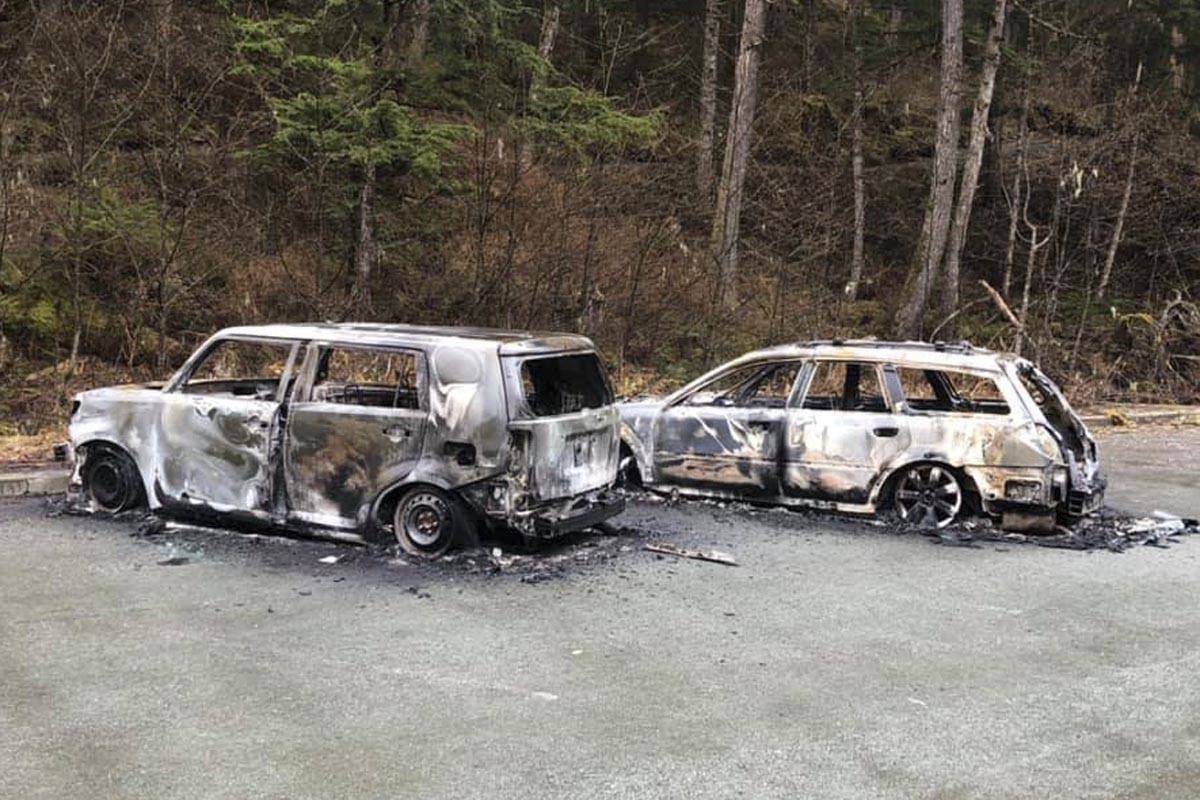A recent two-vehicle fire and a 16-acre brushfire have kept Juneau’s various firefighting organizations busy.
But what happens when the flames are put out and the ashes cool?
“So any kind of a fire we get, we have to, by law, do an investigation,” said Capital City Fire/Rescue Fire Marshal Daniel Jager in a phone interview. “Where did the fire start? And if we can figure that out, how did it start?”
Fire marshals are tasked with many jobs, Jager said, from education to investigations, as well as assisting in providing direct fire suppression or rendering medical assistance.
“It’s definitely interesting. It’s not just dealing with emergencies,” Jager said. “It’s not just sitting behind a desk. I get to work with a broad group of people in the community.”
In the case of the suspicious two-vehicle fire, reported in the early morning of May 3, Jager could disclose little about the progress of the inquiry, as it’s still under investigation. Two cars were completely immolated around Mile 23 on Glacier Highway. The possible arson was reported to CCFR at roughly 4:30 a.m., according to a CCFR Facebook post.
“It’s an ongoing investigation between JPD and myself. We’re still gathering information from the vehicle owners,” Jager said. “We’re still doing interviews with some people. It’s just a big information gathering thing right now more or less.”
Jager said that there are many kinds of arson, from vehicles, to setting fires in the wildlands, to burning property.
“I’d guess we have probably a dozen arson cases a year. There’s really no particular type of location that’s more prevalent than others,” Jager said. “Sometimes they have some issues with the victims. Sometimes it’s associated with other crimes, maybe to conceal a break-in or theft. Over the last 5-6 years, we’ve had a lot that are associated with drug activity or other criminal activity.”
While the embers are cooling
If a close examination of the ignition point reveals something suspicious, they bring in the law. In Juneau, Jager said, that usually means the Juneau Police Department.
“We have a process we have to follow. We’re looking at burn patterns. A lot of people think if you show up to a burned up house, all the evidence is gone,” Jager said. “The ashes and burned-up wood, that’s evidence. We dig down further, literally dig into it, and figure out where it started and how.”
As fire marshals investigate possible cases of arson in tandem with the JPD, they’ll be involved with getting warrants and filing depositions, Jager said.
“Once we do the investigation, and we determine that crime is involved, we bring in the police department. Usually, what happens is it gets turned over to a detective.” Jager said. “I have a special commission as a peace officer with the DPS, and that helps with this. We’re primarily working for the fire department, but we have to follow the same rules for evidence and investigations.”
Jager said fire marshals often work with other organizations, such as the Alaska State Crime Lab and the ATF to use their labs to investigate things found in the fire such as melted appliances or possible ignition sources.
A dream long-held
Jager said he was always interested in becoming a fire marshal.
“I took an interest in the fire marshal job itself back when I was in high school in Cordova,” Jager said. “Later on, I ended up getting hired as a deputy state fire marshal in Anchorage.”
Since then, Jager joined CCFR before becoming a deputy fire marshal here in Juneau. He was promoted to fire marshal for the capital about 12 years ago, a position he’s held since, Jager said.
“You have to understand fire behavior and building construction. 99% of the time, people come up from the suppression side of the fire department,” Jager said. “It’s an interesting mix of skill and talent.”
Jager said that that knowledge of how fires work, as well as grounding in practical engineering, material science and how things react to fire are all essential to successfully investigating a fire. He also said that assistance from the public, especially if they have photos, videos, or firsthand account of an incident, are absolutely invaluable to the fire marshals.
“Once you start your process, you have to be as thorough as possible. It can be a very long process,” Jager said. “If they have any information on this fire, the one with the cars, give me a call. Sometimes people realize, hey, maybe I do.”
• Contact reporter Michael S. Lockett at 757.621.1197 or mlockett@juneauempire.com.
Got info on a fire?
Call Fire Marshall Daniel Jager at 907-586-0260 or email him at Dan.Jager@juneau.org. All such information is anonymous.

